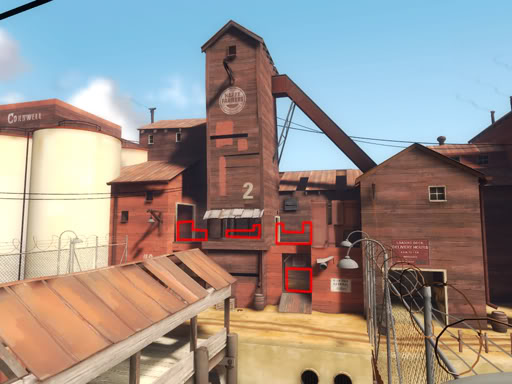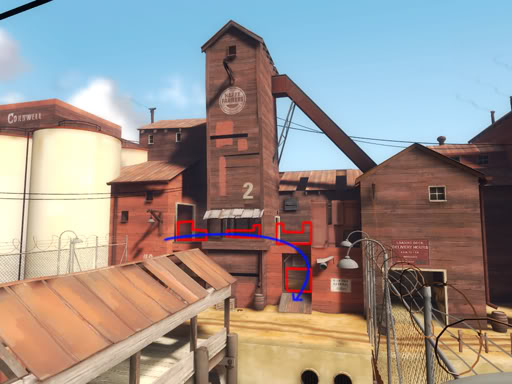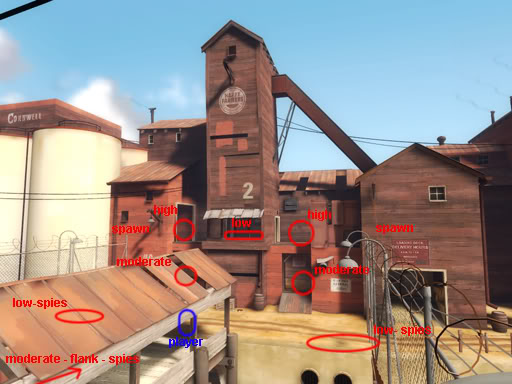- Aug 10, 2009
- 1,240
- 399
Preface/disclaimer: Over the past few months I've tried to create one or two helpful tutorials for the community, but more often then not the topic has already been covered. If that happens to be the case here (I did some searching and didn't turn up much, I also figured Grazr's guide to scale doesn't infringe on this and vice/versa.) then I offer my honest apologies, and will probably replace this tutorial with a single tear  .
.
Note of clarification: when I say tunnel vision, I am referring to the state in which very focused players get, in which they pay less attention to their surrounding area(s) and much more attention to the areas ahead of them, or the areas that they would like to go to. This effectively reduced their field of view and makes them much more vulnerable to flanks from classes like spies, pyros, snipers, scouts, soldiers, or other heavies.
Introduction
Vertical space is a tricky thing, a two edged sword, two one-way mirrors facing each other, a source of endless metaphors. In essence one must use it carefully. Since our birth as a human species, most homosapiens have come to an amazing conclusion. Our eyes are next to, not above or below each other. This leads me to my next stunning conclusion in which I unleash the truth about FOV(field of view) and TV(tunnel vision ). I have created a picture to demonstrate.
). I have created a picture to demonstrate.
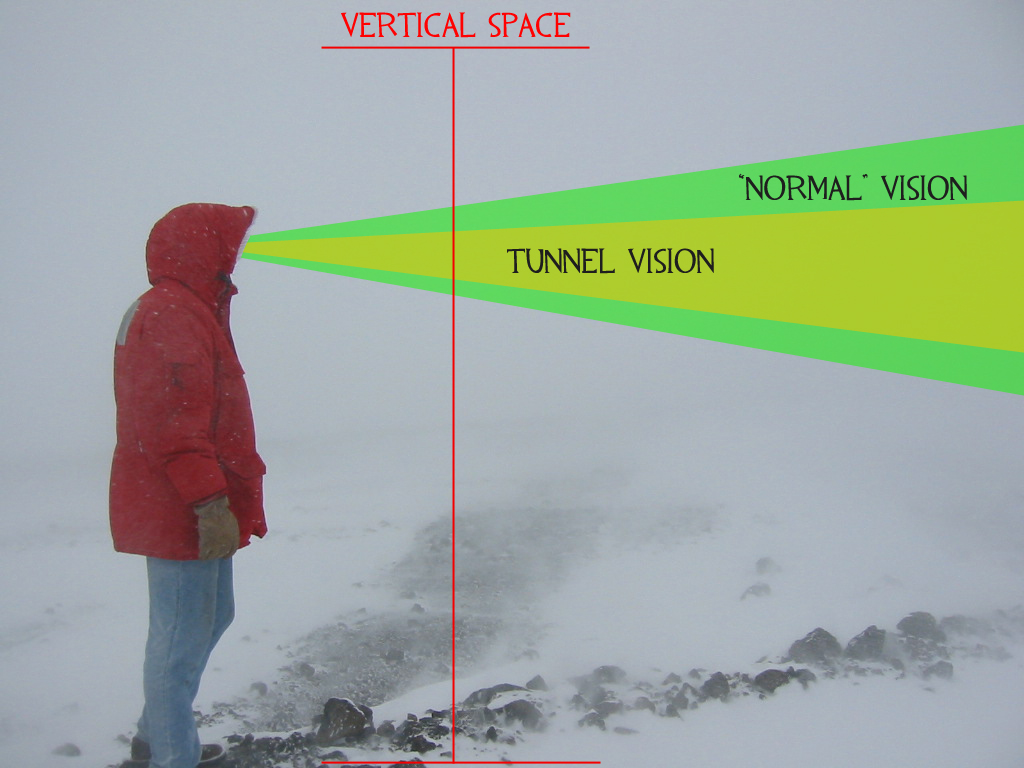
Fig. 1.1: Fred looking out
Here is Fred. Fred is adventurous. Fred is looking out into a snowstorm, but Fred doesn't see much. What is important about Fred though, isn't what he sees, but where he sees. It's important to note that this picture isn't exactly accurate, but generally speaking I'll say it is.
Now the important thing about Fred's field of view is that it's namely horizontal. Because his eyes are next to each other, he analyzes the world horizontally more then vertically. So, if there is a soldier running 256 units above Fred's head, he wont notice it for a much longer time then if it was running next to him. In fact, if the soldier was running even higher then 256 units above Fred's head, Fred would have to crane his neck to see the soldier, therefore taking his eyes off the battlefieldsnowstorm in front of him, and making himself more vulnerable to threats on his plane (the ground he's standing on).
Furthermore, if Fred really wants to win, or get a good kill/death ratio, he's going to probably have a good case of TV, and possibly an advanced Simpsons complex. (futurama is better)
What to take from all this? Humans, thus players examine the world much more horizontally then vertically, so they will see what's ahead and to the side of them much more then what's above or below them. That's why monitors and TV's (noun, this time) extend out much more horizontally then vertically.
Common Vertical Space Ailments (and Cures)
TF2 is very receptive to vertical space in maps; it's very easy for several player classes to navigate up and down as they would on flat ground. Sometimes though, many maps make simple mistakes that make navigating up or down in a map very cumbersome, difficult, and generally aggravating for the player.
Here are some examples:
Dealing with Height Levels: Routes
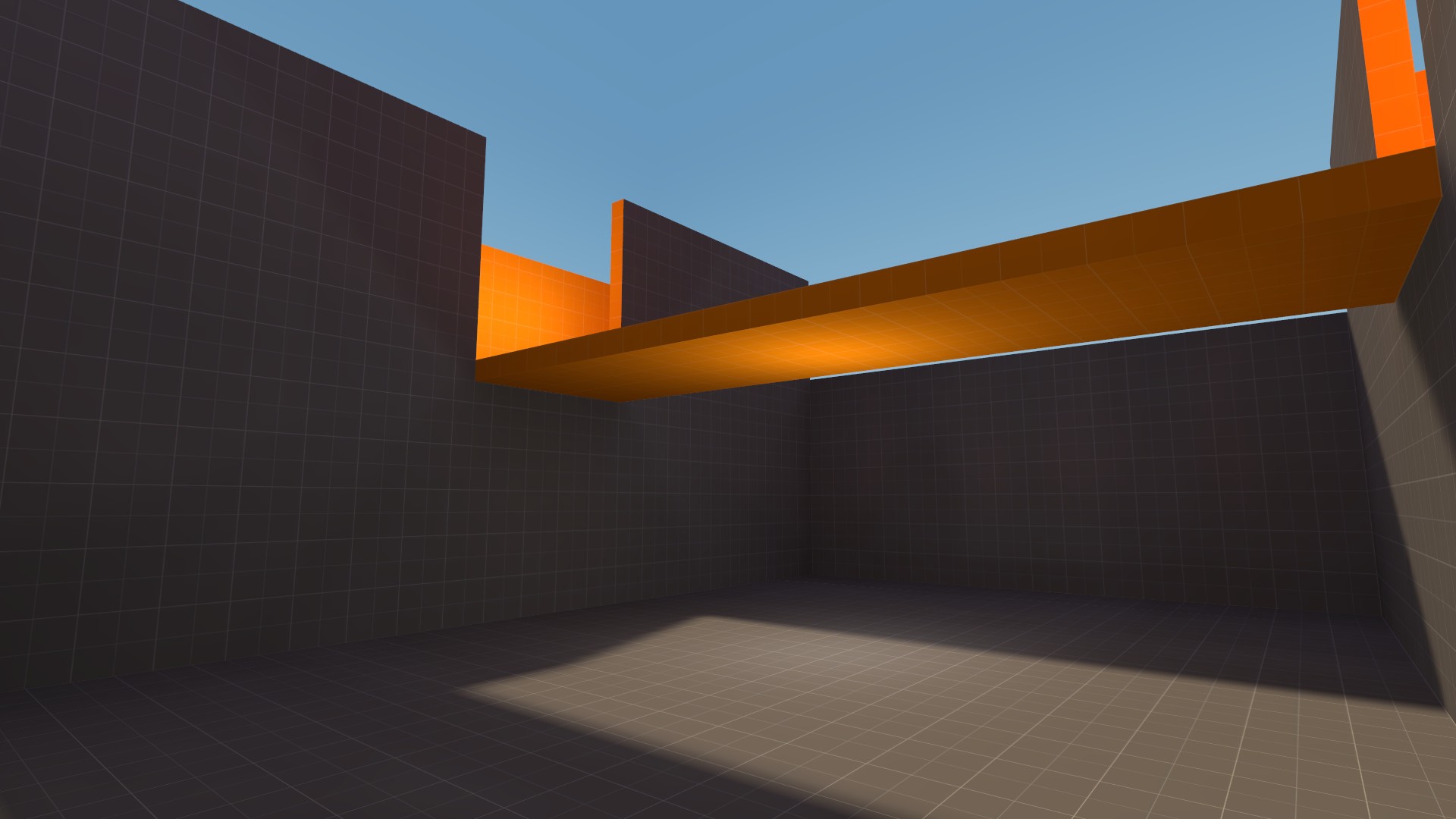
Fig. 1.2: A significantly lower level (192u in this example)
When a player is on a level significantly lower (128u+) then another, they are at a large disadvantage when fighting anyone above them. There is a way to null this disadvantage, and even use it to good effect, but it takes one major thing: routes. A map with a lot of vertical space needs a lot of routes between that vertical space. Treat a pit with several routes (3-4) in and out of it. One way routes don't really count. It's important to do this so that players in the pit don't feel scared to go into it, as they know there are multiple ways out. Having a lack of routes (2-) makes any lower area much more disadvantageous, and a higher area much more advantageous and easy to camp.
To take a Valve example, look at the lower route into Cap 2 of Stage 3 of Dustbowl. This lower level features only two routes all classes can take (all classes must be able to take a route for it to be a route). Thus, it's significantly more dangerous to navigate then if it had another exit leading up to perhaps the long hallway connecting CP 1 to CP 2. Players realize this, thus the lower section of CP 2 Stage 3 of Dustbowl rarely sees much player traffic.
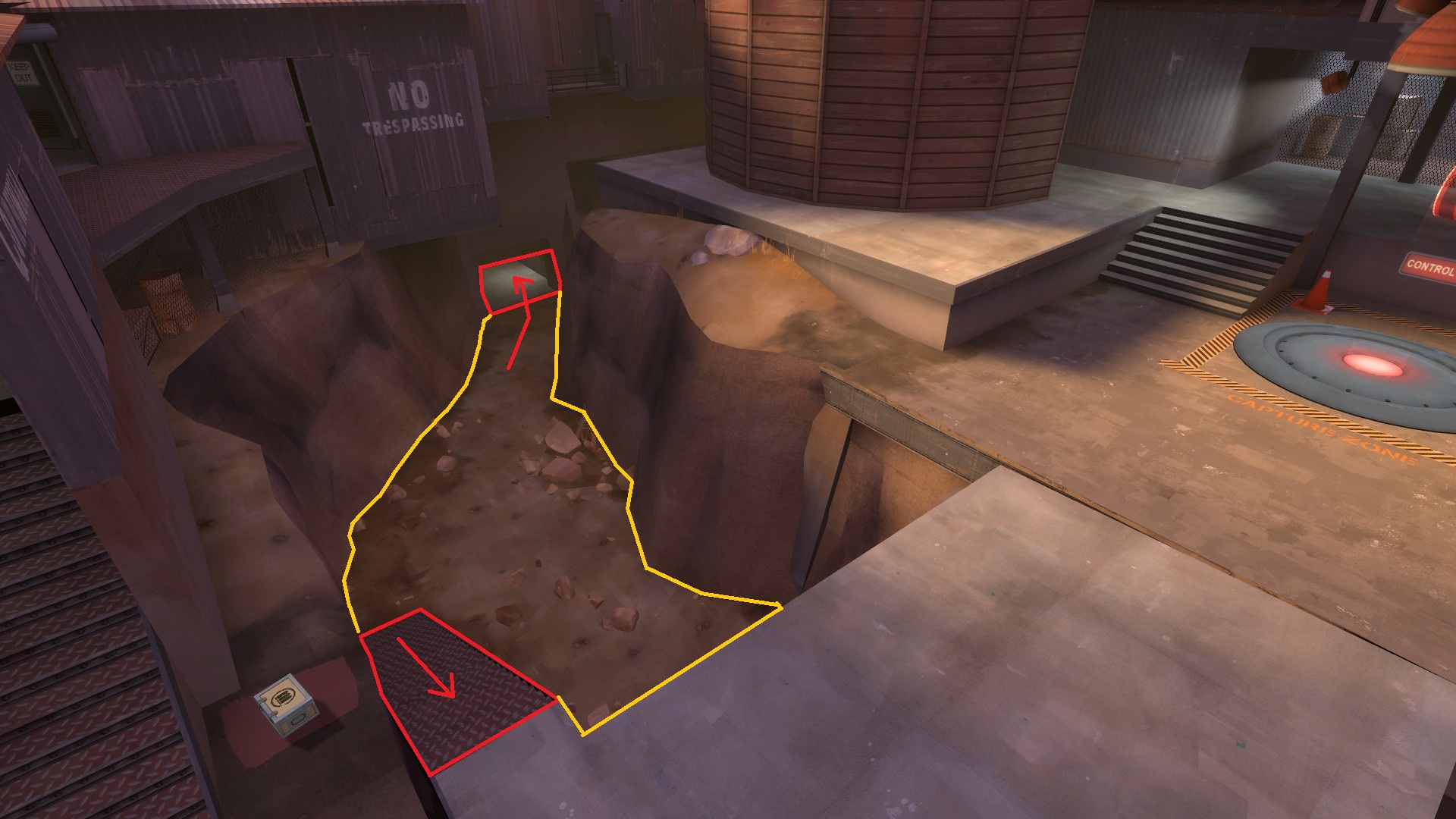
Fig. 1.3: The Valve example
It is also important to provide routes to most playable areas around a lower/upper area. I have a screenshot to use as an example:
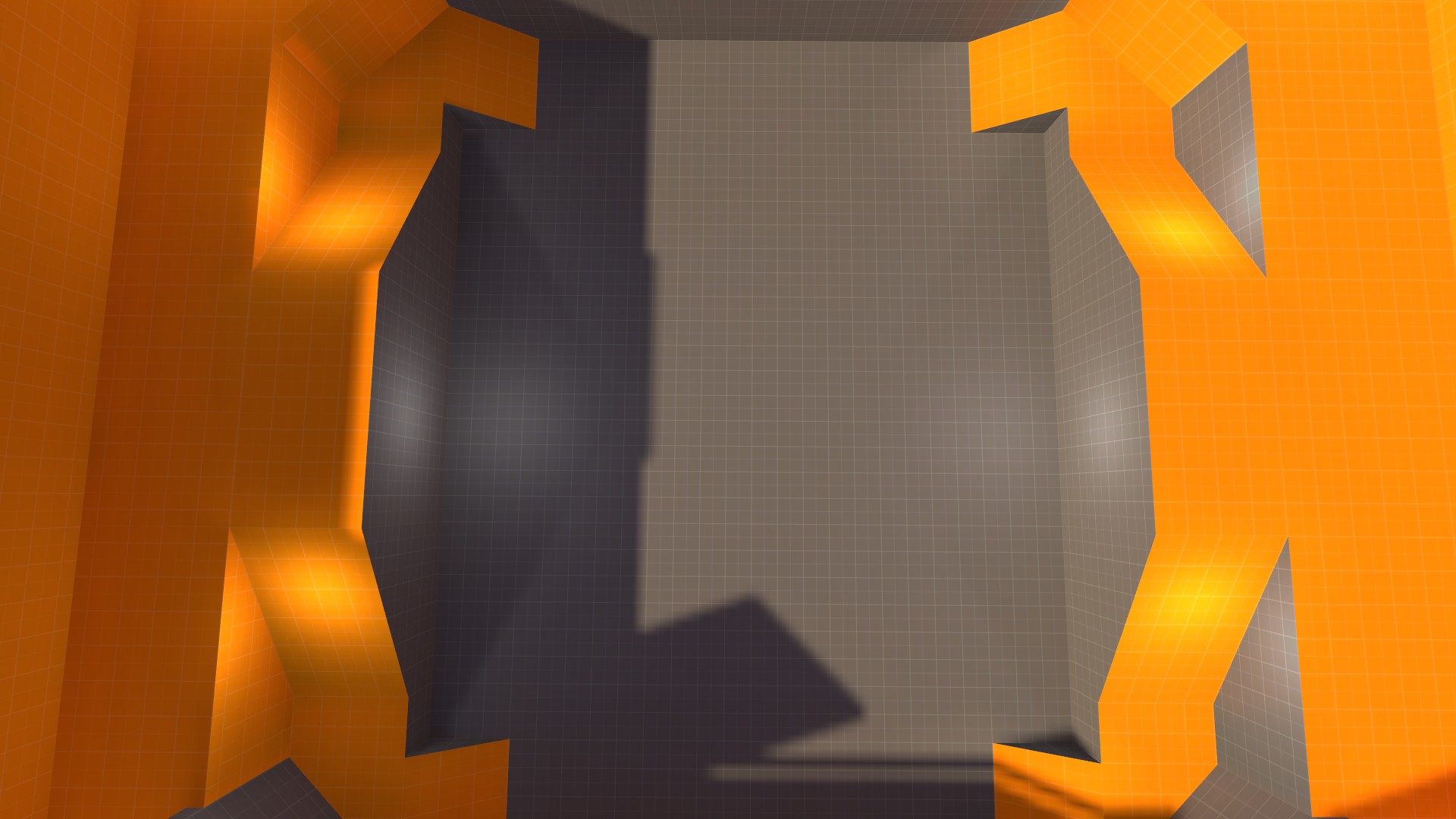
Fig. 1.4: Four routes out, two sides covered
This lower level arena/bowl section has several routes out (4), but doesn't cater to the platform to the right of each ramp up, shown here:
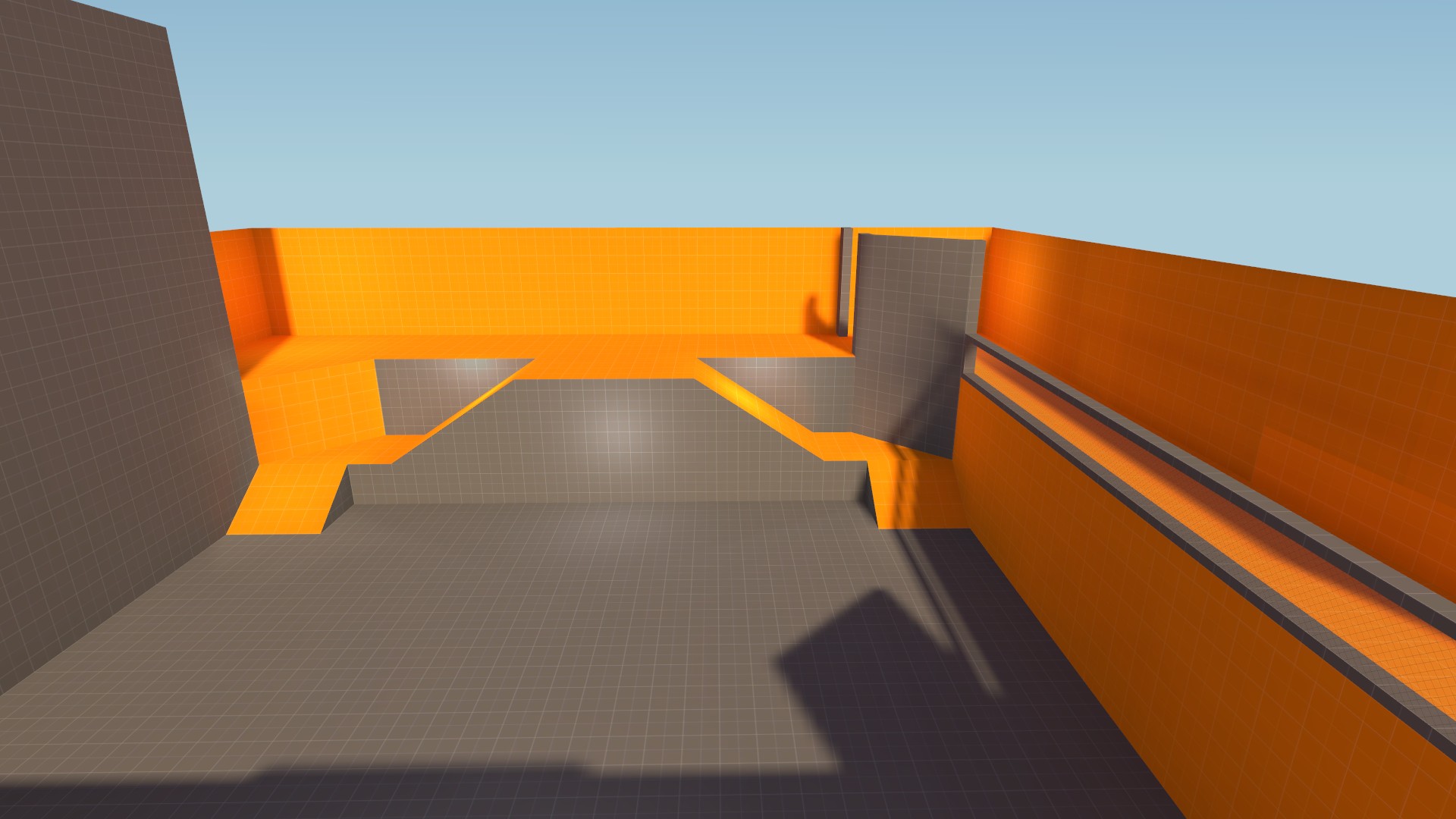
Fig. 1.5: The deadly platform
Thus, while the player can leave using any of the four routes provided, they may find that any players standing on the upper level that doesn't have platforms are in a good position to kill them as they run up, acting as a disincentive for the players to enter the pit, and possibly creating dead, or at least negative space in the map.
Specific Cases
There are a few setups for vertical space that are quite popular among maps, so here is a list of those I know of, problems they often encounter, and possible solutions.
Setup | Attributes | Problems | Solutions | Classic example
Bridge | Certain classes can jump up onto the bridge, but can only run across it (2 ways), and yet be shot at from any number of directions (often determined by what's on the bridge, and how high it is relative to the rest of the map) | Smaller bridges passing over lower routes give players walking above a massive advantage over players walking below | Remove the bridge, fill in the space where players above can shoot those below, add health below, make bridge open with a wall on one side (explosive splash damage), etc.. | Badlands bridge
High path next to a lower alley | This allows for two map routes, next to each other, at two different heights | Players from above rain down fire on those below, the advantage those above have on those below is determined by the width of the lower alley (thinner = more vulnerable for those below) | Giving players below ample space to maneuver, as well as cover to hide behind can null most of the negative effects of this setup | Capture point of Stage 1 of Pipeline
Gradual slope upward | This allows for a general 'hill' shape to form, or perhaps a slight slope upwards, giving a team or player an advantage over those below | These slopes give bullet classes a minor buff over non-bullet classes as the slope tends to be long and gradual, outranging demoman, soldiers, spies running up, and pyros. | Giving players running up ample cover against those at the top lets classes that normally couldn't reach those above a fighting chance at doing so | Viaduct
Valley between high ground | This can serve as a stealth route for players to use in order to get deeper into enemy territory; at the cost of their fighting potential | Players using the lower route are at a massive disadvantage as they are surrounded on both sides by higher ground | allowing the players to run slightly under the upper route (curving a cliff wall in, or having a path under) makes the players running below much harder to see, and allows them to concentrate on the opposite side (in terms of where they may be attacked from) | Dustbowl CP 1 Stage 1
Building or structure amidst flat(ish) ground | This plays a bit like a gradual slope upward, and a higher path/alleyway example. Players on the higher ground can see almost all that is below them, allowing them power over those below their height level | Engineers can take great advantage of this with sentries and dominate players on lower flat ground, pinned behind cover, or without cover at all. | Adding cover for players on the lower ground that additionally allows demomen to lob stickies over, or for the players on the lower ground to get a shot at those on higher ground without risking significant splash damage | Containers in the spawn sides of Ravine
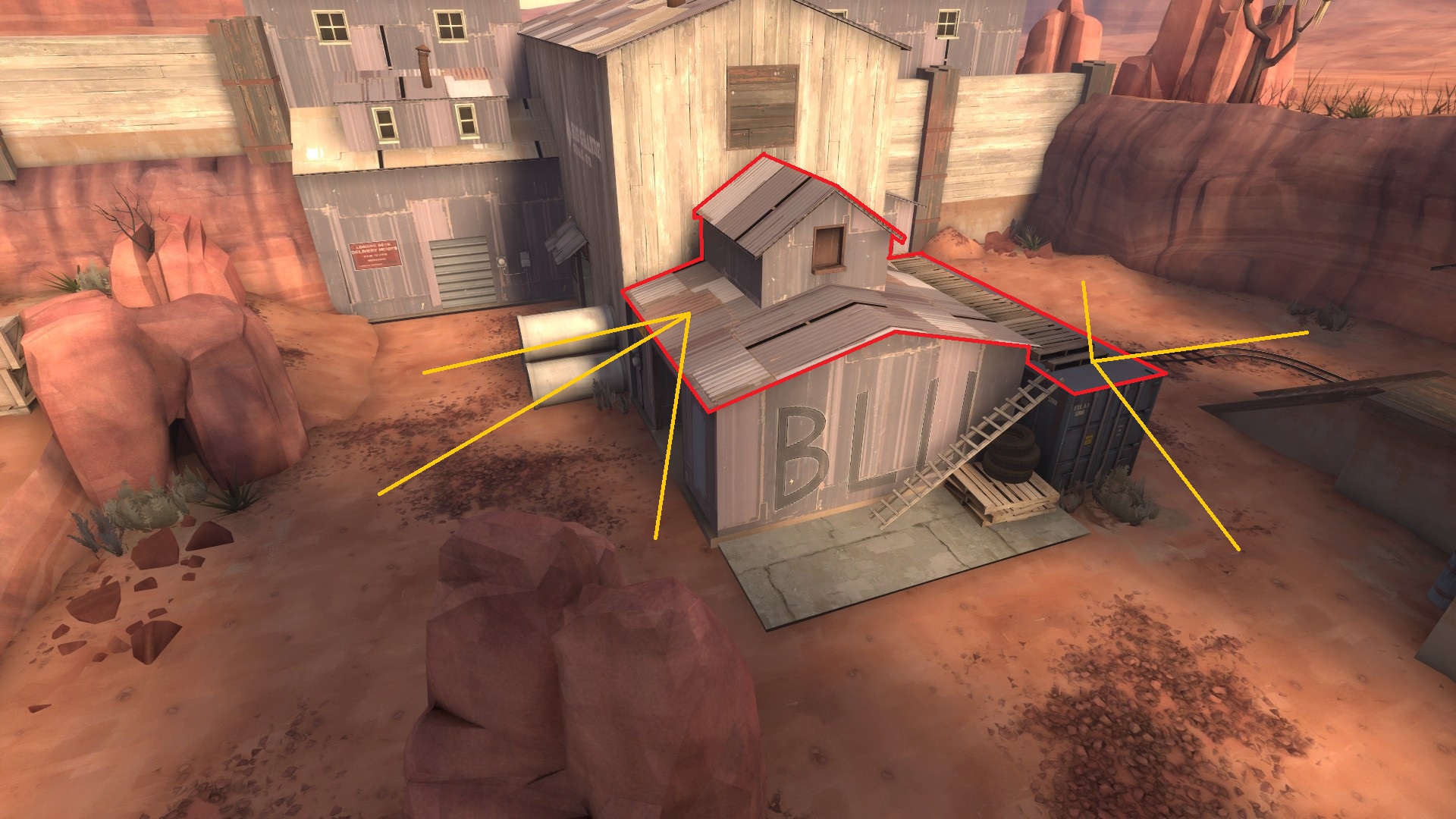
Fig. 1.6: Ravines version of the final setup, a building or structure amidst mostly flat ground
Finding the equilibrium: mappers can combine these cases, or just use a few to achieve what I might consider an equilibrium of/with height variation. A Valve example of this would be spawn sides of Sawmill, where players can run under, though, and on top of building simultaneously, having battles of their own, and not being forced together in an advantage/disadvantage fight.
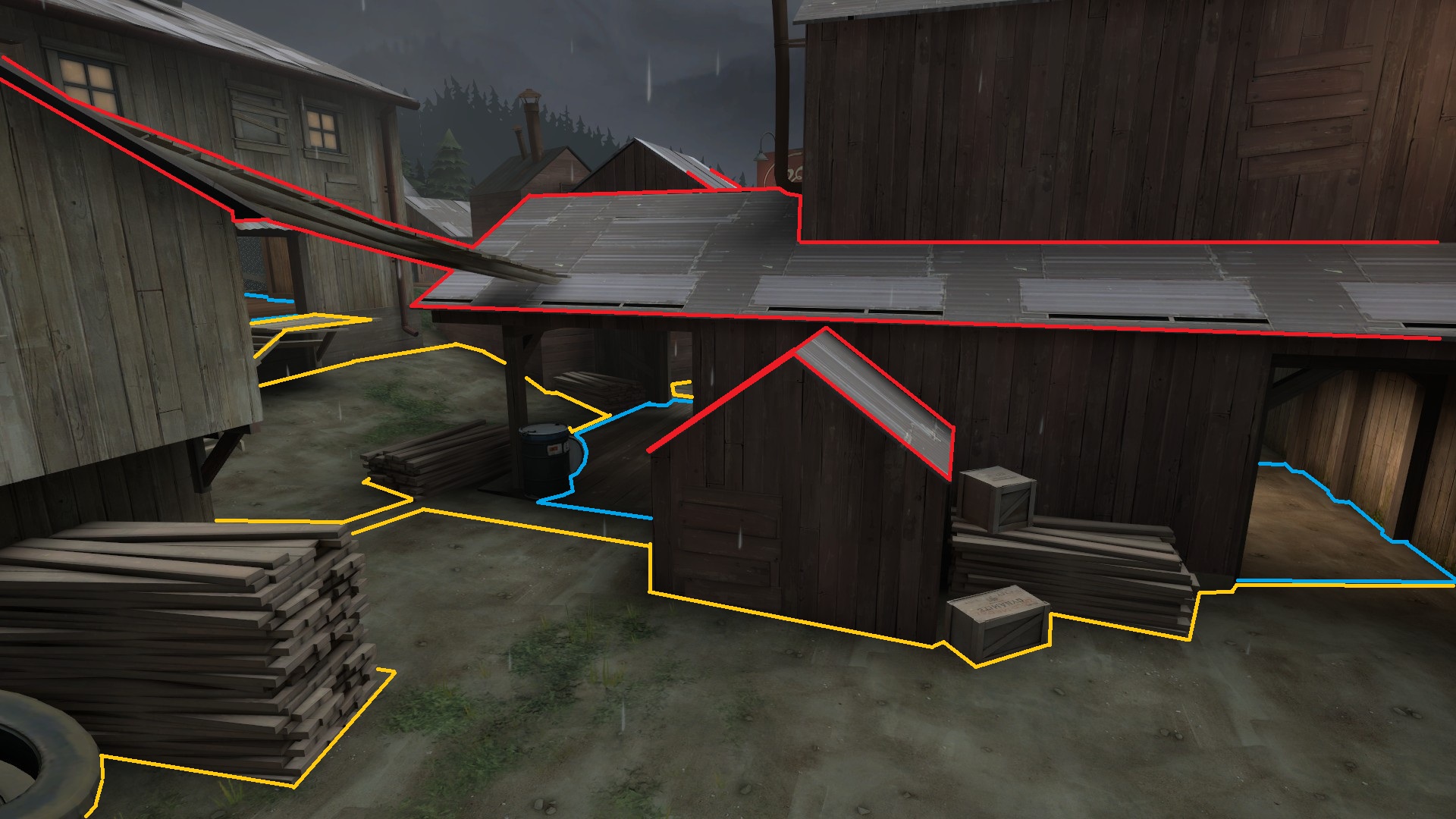
Fig. 1.7: An equilibrium struck between upper levels (in red), open areas (in yellow), and paths going under upper areas or through buildings (in blue)
Conclusions
There are several other aspects of a map that can water down the strength of vertical space in a map (having a large flat area spanning in front of the higher area, with cover to shelter players, blocking sightlines from the upper area, etc..)
But I only wanted to go over the most effective (in my mind) of these options, which is to add routes that traverse levels, allowing for easy player access to all (or almost all) levels.
Note of clarification: when I say tunnel vision, I am referring to the state in which very focused players get, in which they pay less attention to their surrounding area(s) and much more attention to the areas ahead of them, or the areas that they would like to go to. This effectively reduced their field of view and makes them much more vulnerable to flanks from classes like spies, pyros, snipers, scouts, soldiers, or other heavies.
Introduction
Vertical space is a tricky thing, a two edged sword, two one-way mirrors facing each other, a source of endless metaphors. In essence one must use it carefully. Since our birth as a human species, most homosapiens have come to an amazing conclusion. Our eyes are next to, not above or below each other. This leads me to my next stunning conclusion in which I unleash the truth about FOV(field of view) and TV(tunnel vision

Fig. 1.1: Fred looking out
Here is Fred. Fred is adventurous. Fred is looking out into a snowstorm, but Fred doesn't see much. What is important about Fred though, isn't what he sees, but where he sees. It's important to note that this picture isn't exactly accurate, but generally speaking I'll say it is.
Now the important thing about Fred's field of view is that it's namely horizontal. Because his eyes are next to each other, he analyzes the world horizontally more then vertically. So, if there is a soldier running 256 units above Fred's head, he wont notice it for a much longer time then if it was running next to him. In fact, if the soldier was running even higher then 256 units above Fred's head, Fred would have to crane his neck to see the soldier, therefore taking his eyes off the battlefieldsnowstorm in front of him, and making himself more vulnerable to threats on his plane (the ground he's standing on).
Furthermore, if Fred really wants to win, or get a good kill/death ratio, he's going to probably have a good case of TV, and possibly an advanced Simpsons complex. (futurama is better)
What to take from all this? Humans, thus players examine the world much more horizontally then vertically, so they will see what's ahead and to the side of them much more then what's above or below them. That's why monitors and TV's (noun, this time) extend out much more horizontally then vertically.
Common Vertical Space Ailments (and Cures)
TF2 is very receptive to vertical space in maps; it's very easy for several player classes to navigate up and down as they would on flat ground. Sometimes though, many maps make simple mistakes that make navigating up or down in a map very cumbersome, difficult, and generally aggravating for the player.
Here are some examples:
- Not enough routes between levels (there aren't enough ways to get up to level 3, and down to level 2)
- The distance between levels is too big.
Dealing with Height Levels: Routes

Fig. 1.2: A significantly lower level (192u in this example)
When a player is on a level significantly lower (128u+) then another, they are at a large disadvantage when fighting anyone above them. There is a way to null this disadvantage, and even use it to good effect, but it takes one major thing: routes. A map with a lot of vertical space needs a lot of routes between that vertical space. Treat a pit with several routes (3-4) in and out of it. One way routes don't really count. It's important to do this so that players in the pit don't feel scared to go into it, as they know there are multiple ways out. Having a lack of routes (2-) makes any lower area much more disadvantageous, and a higher area much more advantageous and easy to camp.
To take a Valve example, look at the lower route into Cap 2 of Stage 3 of Dustbowl. This lower level features only two routes all classes can take (all classes must be able to take a route for it to be a route). Thus, it's significantly more dangerous to navigate then if it had another exit leading up to perhaps the long hallway connecting CP 1 to CP 2. Players realize this, thus the lower section of CP 2 Stage 3 of Dustbowl rarely sees much player traffic.

Fig. 1.3: The Valve example
It is also important to provide routes to most playable areas around a lower/upper area. I have a screenshot to use as an example:

Fig. 1.4: Four routes out, two sides covered
This lower level arena/bowl section has several routes out (4), but doesn't cater to the platform to the right of each ramp up, shown here:

Fig. 1.5: The deadly platform
Thus, while the player can leave using any of the four routes provided, they may find that any players standing on the upper level that doesn't have platforms are in a good position to kill them as they run up, acting as a disincentive for the players to enter the pit, and possibly creating dead, or at least negative space in the map.
Specific Cases
There are a few setups for vertical space that are quite popular among maps, so here is a list of those I know of, problems they often encounter, and possible solutions.
Bridge | Certain classes can jump up onto the bridge, but can only run across it (2 ways), and yet be shot at from any number of directions (often determined by what's on the bridge, and how high it is relative to the rest of the map) | Smaller bridges passing over lower routes give players walking above a massive advantage over players walking below | Remove the bridge, fill in the space where players above can shoot those below, add health below, make bridge open with a wall on one side (explosive splash damage), etc.. | Badlands bridge
High path next to a lower alley | This allows for two map routes, next to each other, at two different heights | Players from above rain down fire on those below, the advantage those above have on those below is determined by the width of the lower alley (thinner = more vulnerable for those below) | Giving players below ample space to maneuver, as well as cover to hide behind can null most of the negative effects of this setup | Capture point of Stage 1 of Pipeline
Gradual slope upward | This allows for a general 'hill' shape to form, or perhaps a slight slope upwards, giving a team or player an advantage over those below | These slopes give bullet classes a minor buff over non-bullet classes as the slope tends to be long and gradual, outranging demoman, soldiers, spies running up, and pyros. | Giving players running up ample cover against those at the top lets classes that normally couldn't reach those above a fighting chance at doing so | Viaduct
Valley between high ground | This can serve as a stealth route for players to use in order to get deeper into enemy territory; at the cost of their fighting potential | Players using the lower route are at a massive disadvantage as they are surrounded on both sides by higher ground | allowing the players to run slightly under the upper route (curving a cliff wall in, or having a path under) makes the players running below much harder to see, and allows them to concentrate on the opposite side (in terms of where they may be attacked from) | Dustbowl CP 1 Stage 1
Building or structure amidst flat(ish) ground | This plays a bit like a gradual slope upward, and a higher path/alleyway example. Players on the higher ground can see almost all that is below them, allowing them power over those below their height level | Engineers can take great advantage of this with sentries and dominate players on lower flat ground, pinned behind cover, or without cover at all. | Adding cover for players on the lower ground that additionally allows demomen to lob stickies over, or for the players on the lower ground to get a shot at those on higher ground without risking significant splash damage | Containers in the spawn sides of Ravine

Fig. 1.6: Ravines version of the final setup, a building or structure amidst mostly flat ground
Finding the equilibrium: mappers can combine these cases, or just use a few to achieve what I might consider an equilibrium of/with height variation. A Valve example of this would be spawn sides of Sawmill, where players can run under, though, and on top of building simultaneously, having battles of their own, and not being forced together in an advantage/disadvantage fight.

Fig. 1.7: An equilibrium struck between upper levels (in red), open areas (in yellow), and paths going under upper areas or through buildings (in blue)
Conclusions
There are several other aspects of a map that can water down the strength of vertical space in a map (having a large flat area spanning in front of the higher area, with cover to shelter players, blocking sightlines from the upper area, etc..)
But I only wanted to go over the most effective (in my mind) of these options, which is to add routes that traverse levels, allowing for easy player access to all (or almost all) levels.
Last edited:


